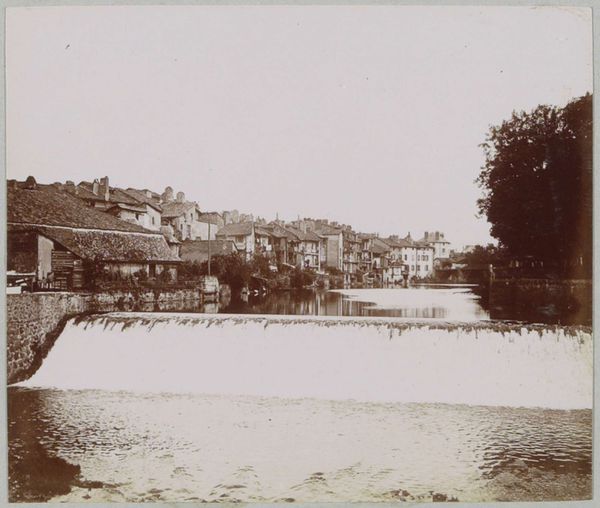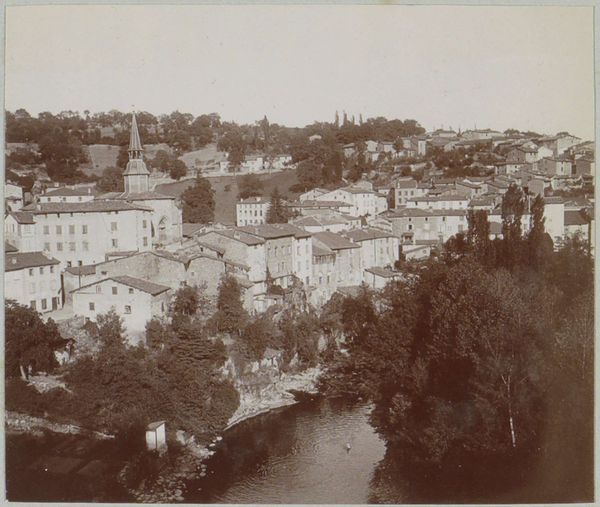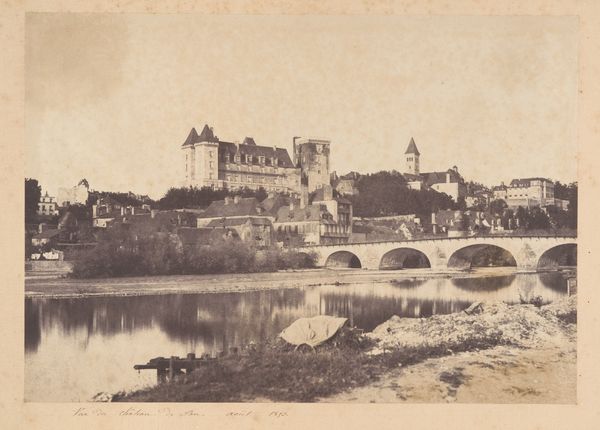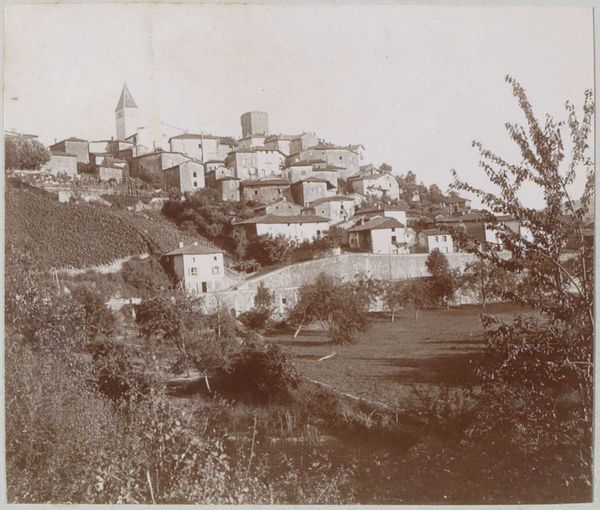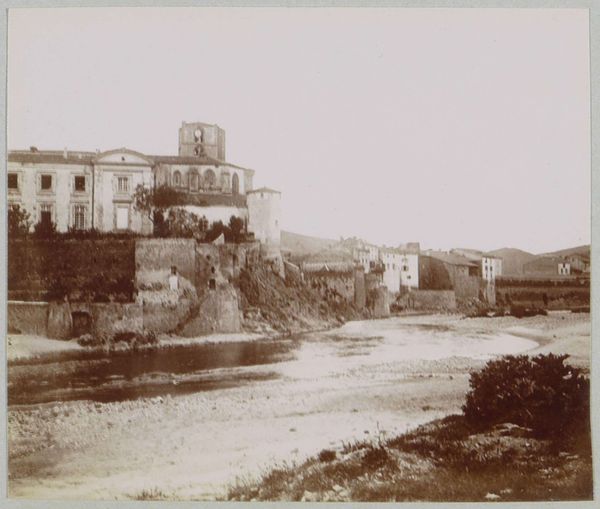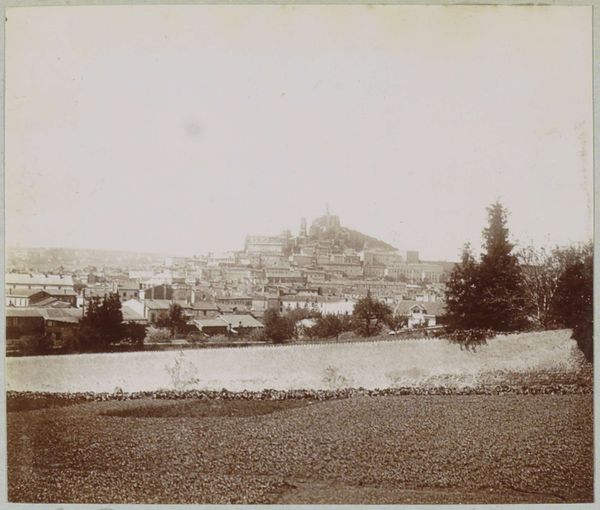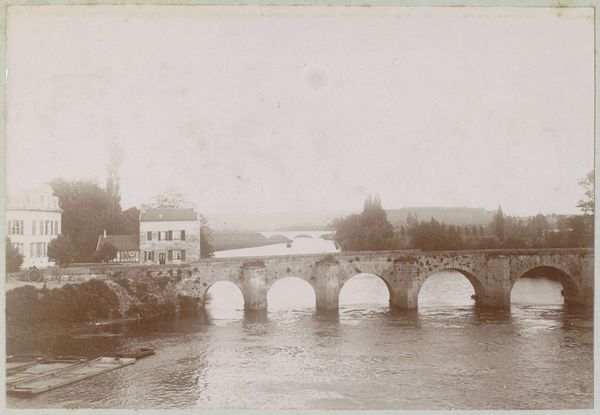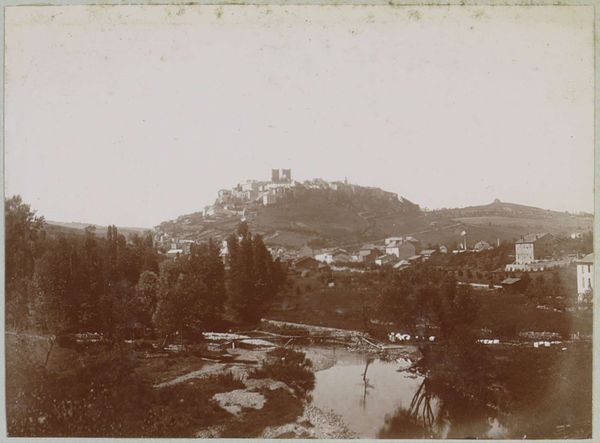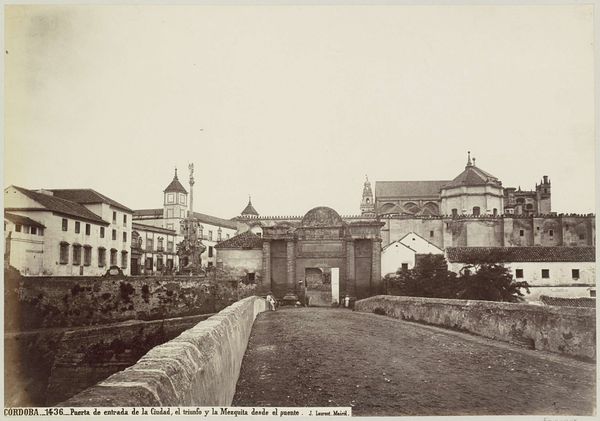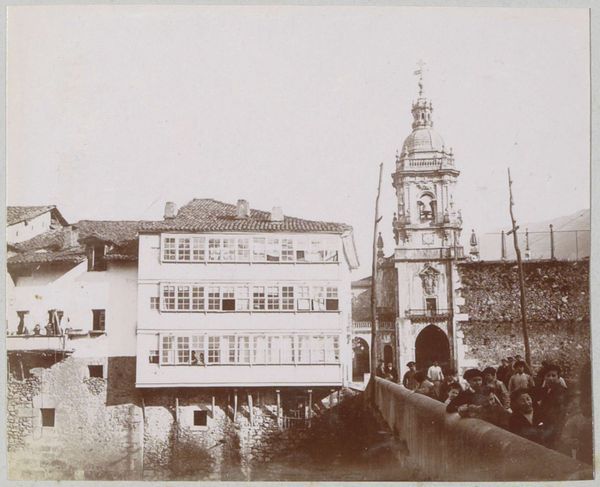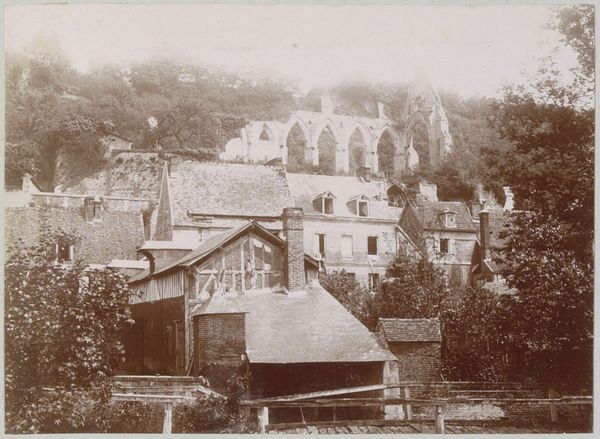
photography
#
16_19th-century
#
pictorialism
#
landscape
#
photography
#
cityscape
#
watercolor
Dimensions: height 70 mm, width 82 mm
Copyright: Rijks Museum: Open Domain
Curator: Here we have "Gezicht op Chanteuges en een rivier," or "View of Chanteuges and a River," taken in 1902. Editor: There's such a quiet melancholy to it. The light feels veiled, almost obscuring the town perched above the river. Curator: This piece demonstrates pictorialism, an approach wherein photographers use various techniques to create images with artistic merit and aesthetic beauty over documentary value. It feels closer to painting, doesn't it? Editor: Absolutely. It makes me consider the romanticized view of rural life so often portrayed at the time, a selective focus on an imagined harmony, deliberately ignoring social inequalities within those idyllic villages. Who does this vision of peace serve, and whose stories are being silenced? Curator: It reminds us of how symbols can become powerful, especially through the romantic lens of nostalgia. Think about that town itself. Villages like Chanteuges, with the river flowing through them and a church rising above, become shorthand for timeless, almost mythical rural places. Editor: And how does the image make use of gendered symbolism? Consider the gentle curve of the river versus the architectural assertiveness of the church. How does the gaze invite the viewer to navigate ideas about nature, spirituality, and power? The muted palette only intensifies these subtle suggestions. Curator: Consider also that this photo was captured around the turn of the century, at a time when traditional social hierarchies were facing great upheaval. Photography like this maybe provided an imagined solace. The architecture looms with great importance and represents tradition. Editor: Right. By visually anchoring the image in that towering building, it asserts a conservative power, framing the community in a particular way and overlooking any tensions or challenges within it. We see the potential for imagery to manipulate, to direct our thinking toward idealized versions of history and experience. Curator: Well, looking at it today certainly opens dialogue on art history and contemporary theory. It speaks volumes about both the creator and the historical period in which they worked. Editor: I appreciate the chance to reflect on what that period represents now and to encourage that kind of vital and sustained questioning through an artwork like this.
Comments
No comments
Be the first to comment and join the conversation on the ultimate creative platform.
